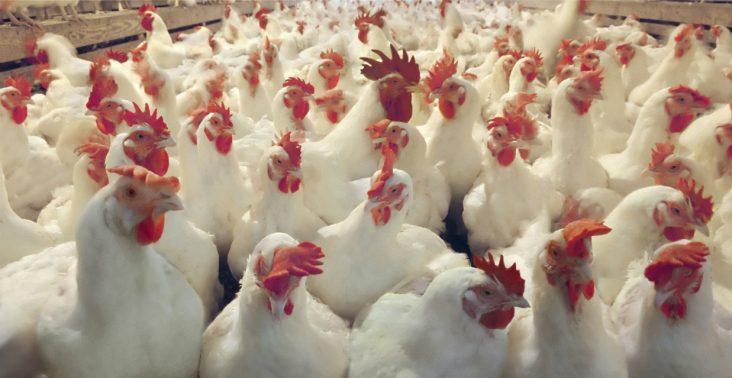Arkansas poultry scientist makes discoveries that could impact human and chicken health
by January 4, 2018 4:18 pm 1,582 views

Poultry scientist Walter Bottje wanted to know what impact mitochondrial activity in chicken cells had on a bird’s ability to convert food into muscle. That scientific curiosity led Bottje, professor of poultry physiology for the University of Arkansas System Division of Agriculture, on a path of discovery that has implications for human health and the poultry industry.
Bottje’s intrigue began with an interest in oxidative stress, an imbalance in cells caused by the overproduction of reactive oxygen species, known as ROS, or oxidants. When this happens, there may not be enough antioxidants to neutralize them.
“ROS is like rust, corroding cell membranes, damaging proteins and even adversely affecting DNA,” Bottje said. “Antioxidants act like Rustoleum, neutralizing the reactive molecules and preventing damage to cells.”
ROS molecules readily react with other molecules, like proteins, causing damage to cells, Bottje said. Mutations caused by ROS are tied to many diseases, including cancer, aging, Alzheimer’s disease, autism, obesity, and diabetes. Previous research in Bottje’s lab showed oxidative stress was involved in pulmonary hypertension syndrome in poultry. A major site of oxidative stress in cells is in mitochondria. These organelles are a cell’s power producers. They make 90% of a cell’s adenosine triphosphate, or ATP.
“A byproduct of the ATP production can be mitochondrial ROS formation that occurs when electrons get fumbled during ATP production,” Bottje said. “They leak out of the transport system, mix with oxygen and form oxidants.”
High amounts of ROS are damaging to the cell, Bottje said, but low levels of ROS are important in conveying information to the rest of cell. They initiation changes in expression of genes and proteins in a process called signal transduction.
“In this way, mitochondria are constantly communicating important information to the rest of the cell,” Bottje said, adding that the process helps the body’s cells adjust to changing needs and conditions.
In investigations of feed efficiency, or how well food is converted into growth and meat production, Bottje’s group was able to show animals with higher efficiency had better mitochondrial function that included less mitochondrial ROS production and less oxidation of proteins. Initial work on this was facilitated and funded by Cobb-Vantress in Siloam Springs.
Bottje, in collaboration with Byungwhi Kong and Sami Dridi, in the poultry science department, investigated global gene and protein expression in muscle. The studies are providing a picture of the basis of feed efficiency at the cellular level. Oxidative stress turned out to be the first of many cellular activities affecting feed efficiency that Bottje has identified.
“There are others and we keep finding them,” he said.
Discovering the causal agents of oxidative stress and locating gene markers that identify more efficient birds is important to poultry industry breeding programs, Bottje said. High feed efficiency with minimal health effects is critical to the poultry industry, especially in light of a need to grow more food for a growing human population. Bottje cited a conclusion of the United Nations Food and Agriculture Organization that the world will have to increase all food production 70% by 2050 in order to feed a population estimated to number 9.1 billion people.
“It’s anticipated that we’ll have to double protein production, both animal and plant foods, with only a 15% increase in arable lands in order to meet that goal,” Bottje said.
Improving poultry feed efficiency while avoiding consequential health problems will be one of the keys to accomplishing, he said. Bottje’s research on these cellular functions also helps discern the functions by which ROS and oxidative stress affect human health, he said. Chickens are a good model for understanding obesity in people.
While feed efficiency is a good thing for chickens, it may not be so for humans.
The broiler birds he works with have been bred for such high feed efficiency a baby chick that weights 40 to 45 grams when it hatches grows to 3,000 grams in seven weeks. That’s roughly 1.5 ounces to 6.6 pounds in 49 days. If humans converted food to muscle at that rate, a 7 pound newborn would weigh 450 pounds at seven weeks, Bottje said.
Chickens make a good model for humans by studying the related cellular activity. Bottje said there are similarities in lipid metabolism between chickens and people. Other animals are used as models for human obesity studies and chickens can help add a few more pieces to a very complex biological puzzle.
